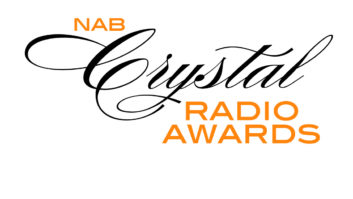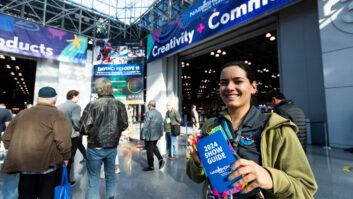WASHINGTON John Reiser recalls his days as an FCC field inspector with a chuckle.
Just an example: He once visited a southern Michigan radio station and discovered that parts of the two-tower array had been painted not with obstruction orange but with school-bus yellow.
Turns out the engineer had been supplied by his manager with paint on trade from a local hardware store. The engineer, however, was slightly color-blind.
Reiser can recite countless stories about poorly kept operating logs and defective remote control equipment.
After hundreds of facility inspections and regulatory meetings, he is being honored for his 39 years of service at the FCC with the NAB Engineering Achievement Award, given to industry leaders for significant contributions to the advancement of broadcast engineering. Reiser accepts the award this week at the Technology Luncheon in Las Vegas at NAB2003.
“John was a true resource for broadcasters during his career at the FCC,” said John Marino, NAB vice president of science and technology. “He made sure broadcasters were aware of the ramifications certain decisions and rulings would impose on the industry.”
Reiser, now 73, retired from the commission in 2000 after working on the reorganization of the Mass Media Bureau. He joined the FCC in 1961 as an inspector at the Detroit field office before moving to the Washington in 1972 to supervise the national program for commercial radio operator exams.
He later was appointed to former FCC Chairman Richard Wiley’s broadcast re-regulation task force to examine broadcast rules that were outdated because of new technology.
‘Carte blanche’ to change rules
“It was very rewarding time for me,” Reiser said. “I had a chance to work very closely with the broadcast industry. I attended all of the NAB and SBE conventions and developed a very strong relationship with broadcasters and engineers, in particular.”
The re-regulation task force had “carte blanche” to address all broadcast rules, Reiser said.
“Our group could simply rewrite or excise both technical and administrative policies by order without going through a rulemaking process. We looked at things like remote control, remote pickup, auxiliary spectrum rules … things that had become outdated because of new technology,” he said.
In 1986, the U.S. Department of State appointed Reiser as chair for U.S. participation in the broadcast study groups of the International Telecommunication Union.
“Seven of those years were spent on developing an international standard for protection of aeronautical radio services. That involved many international meetings with the aeronautical and broadcasting industries to develop it,” Reiser said.
With the radio industry’s possible conversion to in-band, on-channel digital audio broadcasting at hand, Reiser said he remembers the first presentation on digital broadcasting to commission staffers in the early 1990s.
“General Instruments dropped a bomb shell on us. They said they had been working on developing a system to transmit a digital signal, rather than analog, in regards to high-definition TV,” Reiser said. “We were all excited about the possibilities.”
Still, Reiser thinks HD Radio developers Ibiquity Digital Corp. and broadcasters will have a hard sell to the public.
Consumer advantage?
“Digital broadcasting is a great idea. But I wonder if consumers will see enough advantage or convenience in it to buy the receivers,” he said. “I lived through the era of Quadraphonic FM and AM stereo, and both failed to some extent because there was no perceived consumer advantage. I also wonder about potential interference and signal degradation that may result.”
His friends in broadcasting say Reiser’s influence has been felt throughout the industry as a result of his sense of technical inventiveness.
“John Reiser has been as much a part of the FCC, the U.S. broadcast industries and the international broadcast communities as anyone in the latter part of the 20th century,” said Bill Luther, chief of the FCC’s International Radiocommunication branch of the International Bureau. “His greatest attribute was working with others to help them achieve.”
Al Resnick, former chief engineer at WLS(AM) in Chicago and now a consulting engineer with Carl T. Jones Corp., said Reiser has always been on the leading technical edge of broadcasting.
“He was instrumental in protecting the operations of U.S. broadcasters” while at the FCC, Resnick said. “John’s enthusiasm and genuine caring for people has helped many who worked with him to be their best. I’m lucky to say I’m one those people.”
Resier’s early childhood was spent in Cadillac, Mich., where he built his first radio, with the help of the owner a local radio repair shop, so he could listen to symphony concert broadcasts. As a freshman in high school he helped form a radio broadcast club.
He spends time in retirement digitally recording and mastering symphonic concerts and recitals in the Washington area. “I’ve always had this love of audio recording,” Reiser said.
He said was surprised by the NAB recognition but grateful for the honor.
“I hope this award will represent the hundreds of broadcast engineers I’ve met over the years at both big and small stations. The skill sets of today’s engineers are increasing geometrically. They are true professionals,” Reiser said.
The father of five grown children, he lives with his wife Patricia in Mount Vernon, Va., along the Potomac River, not far from the first president’s famous estate.






